
Next you will find out:
- What are impacted teeth and what, in fact, is the essence of the problem with them;
- For some reason, wisdom teeth often cannot erupt normally and how long this situation can last;
- Whether the impacted tooth should be removed, or, perhaps, it is better to preserve it and the problem will somehow “resolve” itself;
- Characteristic symptoms that are commonly observed during tooth retention;
- How are the impacted wisdom teeth removed - the sequence of actions of the dentist-surgeon;
- What can you expect after the operation (including in cases where the removal was difficult);
- And finally, what to do if suddenly serious complications arise ...
A general idea of what is a impacted tooth can be obtained if we take into account that the word “retention” (translated from Latin) means “containment”, “delay” or “retention”.So, when they talk about the impacted wisdom tooth, then it is primarily about delaying the eruption of the tooth or about the violation of the process of its eruption.
Simply put, a reticulated wisdom tooth is an eighth tooth that is shaped but not penetrated through the bone tissue of the jaw or gum.
The photo below clearly shows that the impacted wisdom tooth is literally hidden in the gum:
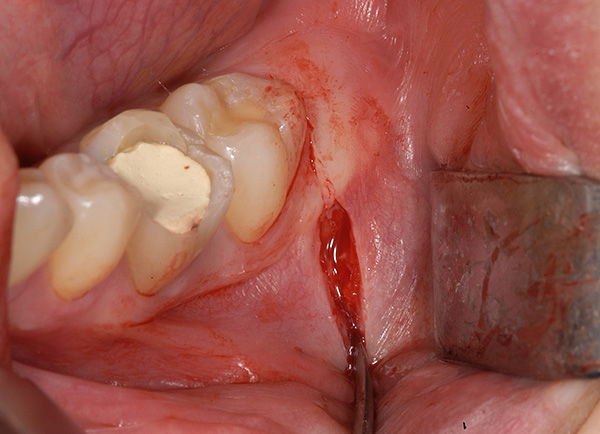

On a note
Not only wisdom teeth can be impacted. For example, "sit down" in the bone or in the gum "can and upper canines, and lower premolars (small root). Still, it is the eighth teeth that most often appear to be impacted.
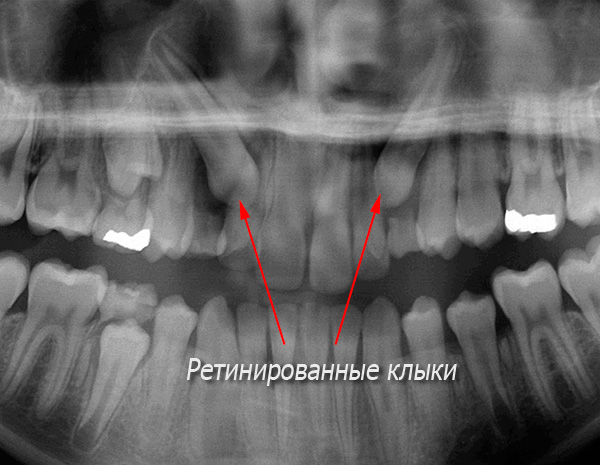
Here it is required to clarify some nuances. In particular, is it possible to call such a retention an eruption anomaly? If we talk about wisdom teeth, then their non-cutting up to 25 years in the absence of corresponding problems as a whole cannot be considered an anomaly. Later - it is already formally possible, since eights after 25 years are normal (for most people) still erupt.
Is it possible to call the retention of the partial eruption of the eighth tooth? When a wisdom tooth emerges from under the gums with one or two hillocks, then they consider that this is not a tooth that is already horn, but a polyurethin.Such polyurence has its own characteristics and sometimes brings much more trouble than the retention itself - we'll talk about this a little lower.
If the tooth is impacted, then this does not mean that it must be removed. For example, there are quite a few examples when the "sleeping" for years the eighth tooth suddenly became more active and literally in a matter of months successfully occupied its rightful place in the dentition.
However, quite often, impacted teeth still create serious problems, which can adversely affect not only the dental system, but also the entire body ...
Why can't a wisdom tooth erupt and how long does it take
Sometimes a wisdom tooth cannot erupt for more than a year, causing considerable discomfort, while there are cases of completely painless and quick cutting. Experts are still arguing about why wisdom teeth in some cases cannot erupt normally.

On a note
Wisdom teeth are considered to be rudimentary formations (for example, like the tailbone, which is the rudiment of the tail). According to the theory, when a primitive person ate coarse food, without proper heat treatment, it required considerable chewing from the jaws and teeth.The last teeth (wisdom) unloaded the end section of the jaw, markedly improving the situation with regard to chewing effectiveness.
Today, people do not need to gnaw the bones and eat the raw meat of a newly killed animal, therefore, it is believed that evolution does its job: if wisdom teeth are almost no longer needed for chewing, then why leave them a place in the jaw? The evolutionary point of view indicates that over the past long period of time, the human jaw has significantly narrowed, has become more compact and not so spacious, which creates its difficulties when trying to eights.
Among the reasons predisposing to the retention of teeth, include the following:
- early loss or removal of milk teeth;
- genetic (hereditary) factor;
- complementary teeth;
- poor nutrition of the child;
- transferred rickets and some infectious diseases.
... And others. In some cases, these factors may well turn a normal tooth germ into a impacted tooth.
In normal terms, the onset of wisdom teething is 14-25 years. Of course, the Eight can "climb" a little earlier, and much later, but the most important thing is for this process to take place comfortably.If a wisdom tooth in an adult person continues to exist for a long time in the bone, under the gum, then it will not hurt to check its condition (on an x-ray you can see how it is located in the jaw and whether it is worth expecting problems in the future).
The following is an example of a wisdom tooth horizontally placed in the jaw:
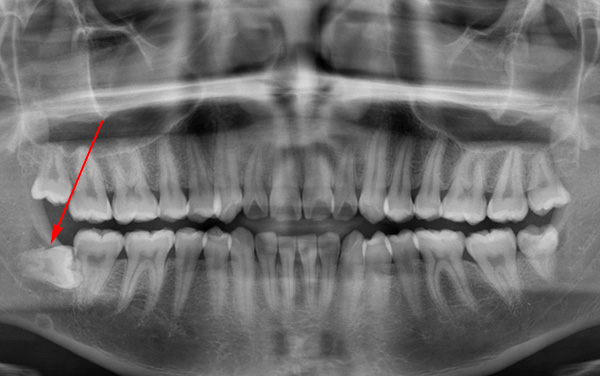
It should be borne in mind that some people may have no rudiments of the upper and / or lower wisdom teeth. (according to some data, this is typical for more than 10% of the world's inhabitants). Accordingly, in this case, the eights will never erupt and will not disturb throughout their lives.
Dental Surgeon Review:
“Personally, I do not have the rudiments of the 2 upper wisdom teeth, but the eighth two of the lower eighths have already fully cut off at 18 years old. The absence of the upper wise teeth was discovered by chance, after computed tomography related to the ENT disease. It was possible to investigate the image in detail. Almost immediately it became clear that there are no rudiments of the upper teeth of wisdom, which means that one should not wait for them to appear on the surface ever.
Svyatoslav, Samara
When the germ of the wisdom tooth is still there,then a completely logical question arises: will the 7 not interfere with the normal eruption of the eighth? Such fears are not unfounded, since it is the Seven that most often prevents the emergence of a wisdom tooth, creating prerequisites for its retention.
Let's continue to see what to do with the impacted wisdom tooth — whether to remove it immediately, or can we somehow help it cut through, despite the interfering seven and other obstacles? ..
Should the impacted tooth be removed or, perhaps, better to save it?
It is clear that very few people want to remove a tooth, even if it cannot erupt and because of it the gums and jaw constantly hurt. And how good it would be if the problem somehow “resolved” itself over time.
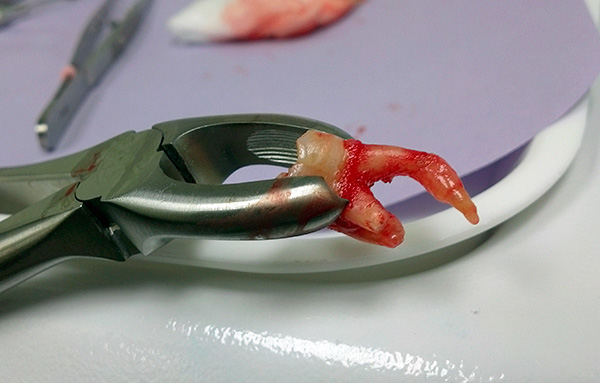
Is it possible, and is it possible to do nothing at all with problems with the impacted tooth without harm to your health?
Well, there is no universal answer: in each case, the decision on the need to remove a tooth must be made individually.
In the simplest case - in the absence of complaints from a person, as well as with the correct location of the wisdom tooth in the jaw (in the picture) - there is no sense to delete it.If a wisdom tooth is cut for a long time (not shown from the gums), then this is his “right”, and it is almost impossible to speed up this process.
Now let's see in what cases it is necessary to remove the impacted tooth with a high probability. Let us examine the situations associated only with the retention of the wisdom tooth, while not touching the semi-trendy.
So, today, the removal of the impacted wisdom teeth is recommended for:
- Persistent pains;
- Pronounced inflammatory phenomena;
- The location of the tooth in the follicular cyst;
- Impossibility to carry out high-quality orthodontic treatment;
- Incorrect positioning of the tooth in relation to the jaw and (or) adjacent tooth (strong inclination in the direction of the 7th tooth, location partially under it, reversal of the wisdom tooth, upside-down position, etc.).
It is important to note that the recommendation does not mean the obligatory action.
In practice, the situation is usually such that, in most cases, the impacted tooth will have to be removed with a follicular cyst, serious location abnormalities, suppurative inflammatory processes (periostitis, abscess, phlegmon, osteomyelitis, odontogenic sinusitis, lymphadenitis) and when correcting the bite. However, the last word is always for the dentist, since it is he who is responsible, as a doctor, for the life and health of each patient.
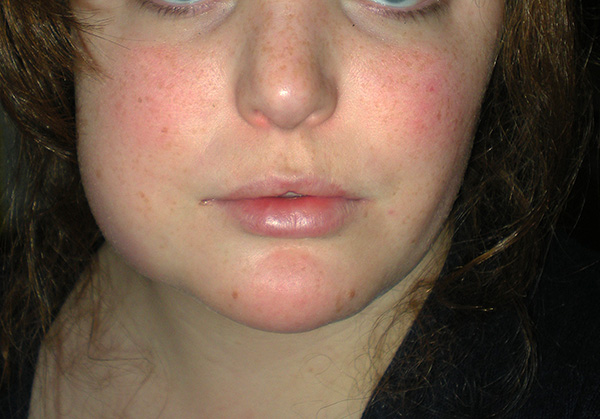
Dental Surgeon Review:
“A large group of maxillofacial surgeons against experiments with the expectation of weather at the sea: it’s better to remove them before some of the impacted teeth spoil the feast. In general, these guys know what they are talking about: I saw such unfortunates at their reception, and even he himself operated on one of these at 55 years old. I took the risk of taking emergency care, but something didn’t grow together: after 3 hours of work, the roots did not succumb either to their separation by a drill or using a set of elevators. As a result, the patient was hollowed out for about an hour with a chisel for about an hour, instead of cutting the roots, the professor of the department of maxillofacial surgery with students.
But the reason for the arrival of this difficult patient (my good friend) - the inflammatory process began in the gum near the projection of the wisdom tooth, although all the teeth on this side have long been removed. Everything, but not everything: the left lower wisdom tooth would not cut through until 55 years old, and it would not have appeared itself - just this eighth one, lying horizontally in the jaw, decided to arrange for the patient “to gruel” under a pension.It turned out something like pericoronitis, but there was also purulent swelling in the gums with the appearance of a fistula, through which pus was evacuated when pressed. If there was no outflow of pus, then maybe life would have saved him much earlier. It goes without saying that he departed from the operation for about a month. That is, about 4 weeks after the operation, he began to talk normally, open his mouth and eat at the professor’s place, but this is not because I and the professor tried so hard: I just really got a complex, impacted tooth that was involved in a purulent inflammatory process. ”
Symptoms of impaired wisdom tooth eruption
Impacted wisdom teeth may remain absolutely asymptomatic for a very long time in the jaw. In the future, it all depends on the criteria described above: if the tooth does not meet any obstacles in its path, then it safely takes its normal place at the end of the dentition.
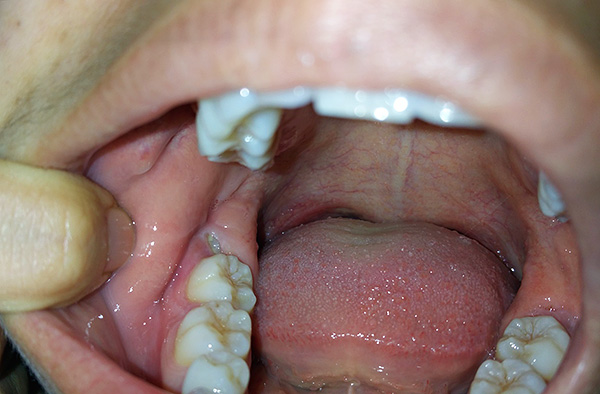
On a note
Normally, in the absence of complicating factors, the wisdom tooth cuts through within 2-3 months, and in severe cases, the process may well be delayed for 1-2 years.Moreover, if the G8 interferes with something, then it can pause its “move”: it is no coincidence that many patient reviews say that they have a wisdom tooth cut through in several stages.
Often, long before the appearance of the eight on the surface, there can be unpleasant symptoms that make a person think about the possible removal of the impacted tooth.
For example, when the nerve fibers are close to the wisdom tooth, which is located in the thickness of the jaw bone, they can be squeezed, which causes neuritis or neuralgia - severe pains that often radiate along the branches of the trigeminal nerve.
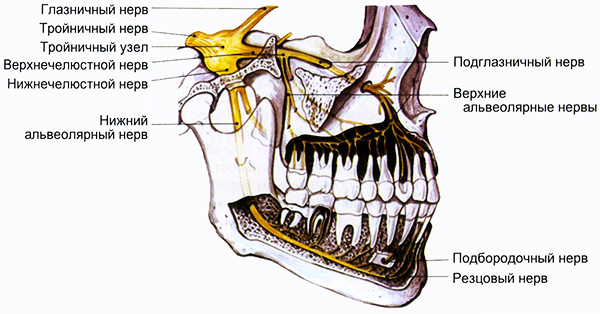
In addition, the retention of a tooth can cause the occurrence of follicular cysts around it, which, increasing in size from year to year, can be a source of serious complications (osteomyelitis, cellulitis, etc.). In acute forms, the body temperature rises to high values, and the patient’s condition as a whole can be quite severe.
Often, against the background of the inflammatory process, there is a strong swelling in the area of the impacted tooth. Violation of the symmetry of the face, coupled with pain and high temperature, quite clearly make it clear that something serious is happening that requires urgent intervention by a specialist doctor.
Now let's assume that the eighth tooth broke the bone barrier, and part of its crown has already left the gum. At first glance it may seem that the most difficult thing is behind - the tooth is almost erupted, only a little bit left. However, in reality, things may not be so rosy.
The photo below shows an example of a polyurethinized wisdom tooth:
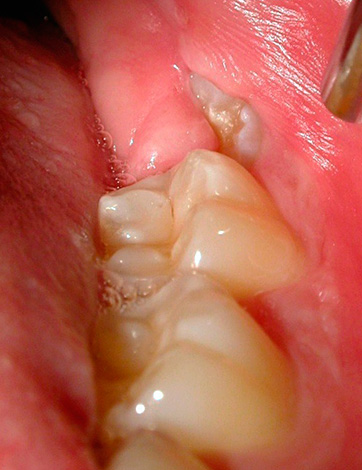
Often, food particles and bacteria accumulate under the gingival hood, and an inflammatory process occurs - pericoronitis. When a purulent exudate forms under the gum, symptoms appear that prevent normal human life: edema in the wisdom tooth, poor general condition, temperature rise to 38-39 ° C, inability to chew and even open the mouth normally, severe pain, often pulsating and radiating to various areas of the face.
With such symptoms, it is quite possible to understand the desire of a person to immediately remove a polyurethinized tooth and not suffer further. However, in such a situation, there is still a way to help the wisdom tooth cut through without resorting to at least - removal. This is the excision of the gingival hood.
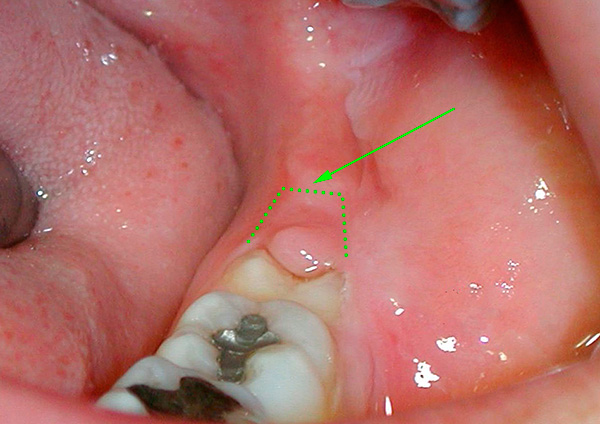
On a note
Until now, there are many supporters of the method of excision of the hood over the wisdom tooth, which was partially cut through. This procedure is often carried out much faster than the removal operation: anesthesia is done, an overgrown gum is excised with a scalpel, a styptic swab is placed - about 10 minutes for the whole procedure.
However, it also happens that this method, especially when it is impossible for a wisdom tooth to take its place in a row even after excision of the hood, provokes the risks of further complications. Sometimes it is necessary to excise the hood repeatedly. That is why the opponents of this method propose to immediately remove wisdom teeth with difficult eruption.
How are impacted wisdom teeth removed, and how long it can take
If the removal of the impacted tooth is unavoidable (swollen cheek, severe pain, orthodontic treatment), then the dentist-surgeon takes up the case.
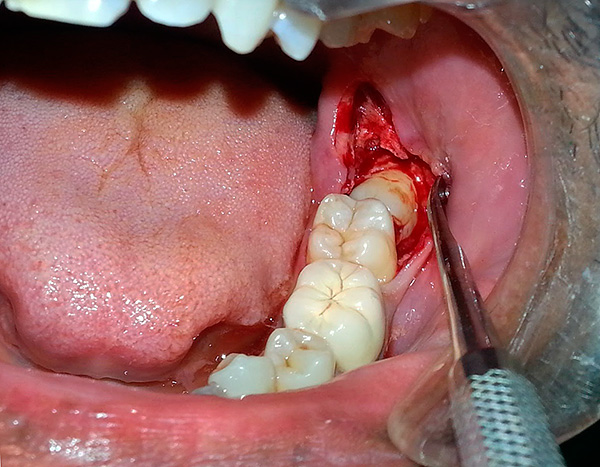
Let's take a look at how all this usually happens in practice and, in particular, answer the following burning questions:
- Will I have to endure a lot of pain?
- How long does a complex removal usually take?
- Will cut the gums and cut the bone?
- Will they be stitched, or can we do without them?
Let's start with pain relief. Most often, the removal of the impacted and polyurethinized tooth is carried out under local anesthesia, that is, the person is fully conscious, but the area of surgical intervention does not feel or hardly feels.
It should be borne in mind that some people "freeze takes" without problems, and someone has to some degree have to experience what an ineffective anesthesia is. And, as it were, dental clinics do not praise in advertising that they carry out all the procedures for teeth extraction with absolutely no pain, but let us be honest - painless removal is the result of many factors, among which the following people play the leading role:
- The professionalism of the doctor;
- Anesthetic quality;
- The patient's condition.
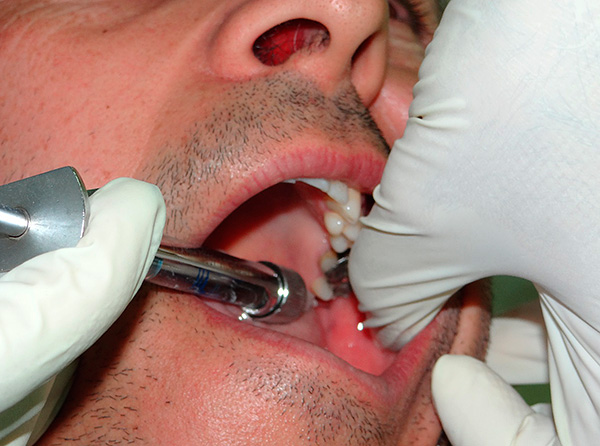
If the dentist is experienced enough, he has properly organized his work and observed the technique of anesthesia, then in almost 95% of cases the success of anesthesia is guaranteed. Knowing the properties of anesthetics and being able to work with them, you can even carry out high-quality anesthesia with an inexpensive domestic drug.(another question is that this may be associated with additional time and increased risk of adverse reactions, while the choice of import anesthesia suitable for a given clinical case usually accelerates the onset of persistent “freezing”).
The patient's condition also plays an important role: for example, the presence of alcohol in the blood and a strong fear can seriously worsen the conditions of anesthesia - everyone who is going to go for tooth extraction (not just the impacted tooth) should know about it.
The removal (“stretching”) of a retired wisdom tooth can take from 10-15 minutes to 2-3 hours on average.
It is important to know
Today, you can see advertising with an emphasis on the very rapid removal of impacted or half-erupted wisdom teeth: they say, within minutes, your problem will be solved.
So, it should be borne in mind that professional maxillofacial surgeons will never pretend for certain that the removal of a wounded tooth will be simple and quick.
As for the process of removal of the retinal eight itself, it usually consists of the following steps:
- Preliminary preparation (instructing the patient, removal of dental deposits, antiseptic treatment of the gums, etc.);
- Local anesthesia (although in some clinics they can offer general, that is, anesthesia);
- Creating access to the impacted tooth (incision of the gums with a scalpel, removal of bone tissue with cooling cutters. In some clinics they can use a laser scalpel);
- Extraction of a wisdom tooth by elevators, or sawing it with boron into parts and the gradual removal of each piece. Do not be afraid of cutting a tooth out of the jaw, as it almost always speeds up by 2-3 times the work and allows you to come to a positive result in less time. Compared with cutting, it is much more unpleasant to gouge the impacted tooth with a chisel;
- Hemostasis (stop bleeding). After removal, preparations based on artificial bone (plastic wounds), hemostatic sponge or turunda with anti-inflammatory, analgesic and antiseptic can be put into the well.
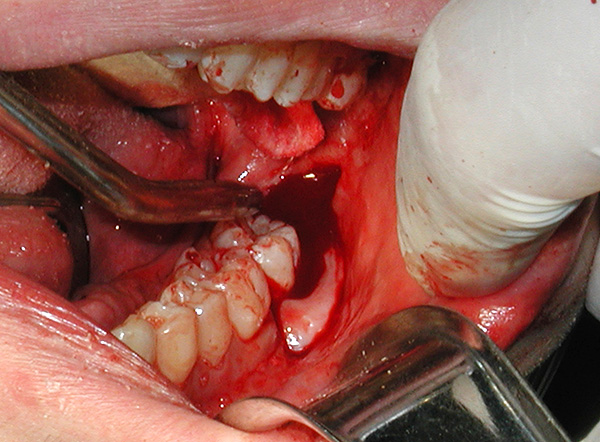
Sometimes, for the successful healing of a wound after the removal of a wounded tooth, it is sutured. In most cases, stitches play a positive therapeutic and preventive role, reducing wound clearance and creating a barrier to food penetration and infection.
On a note
Self-absorbable sutures are more expensive than conventional ones, but there is no need to re-apply to the dentist about their removal.
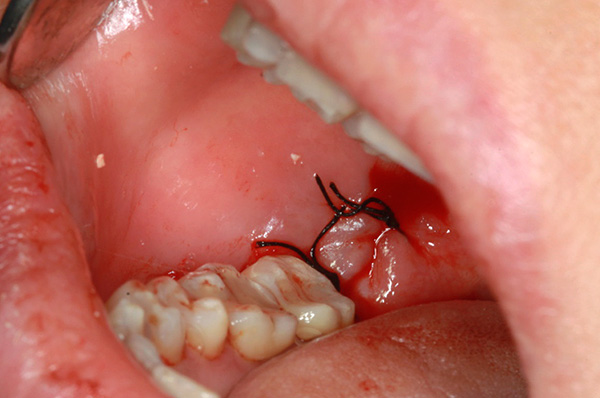
As for bleeding during and after tooth extraction, it is usually not strong and passes quickly. The fact is that adrenaline is specially added to modern anesthetics, which tends to constrict blood vessels, after which it is convenient for the dentist-surgeon to even carry out complex removal of the impacted tooth, since very little blood is lost.
What awaits you after surgery, especially if tooth extraction was difficult
A professional doctor, after the removal of any tooth (not only the impacted tooth), provides the patient with a memo (most often written) so that all necessary recommendations after the operation are carried out.
Usually, the dentist emphasizes that after removal it is possible:
- Pain sensations;
- Edema;
- Temperature increase (body defense);
- Impaired chewing;
- Difficult mouth opening;
- Slight bleeding from the hole;
- Temporary disability.
Here is an example of such a memo:
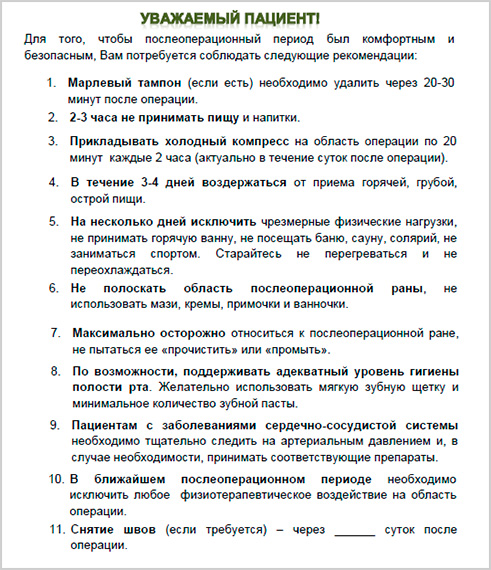
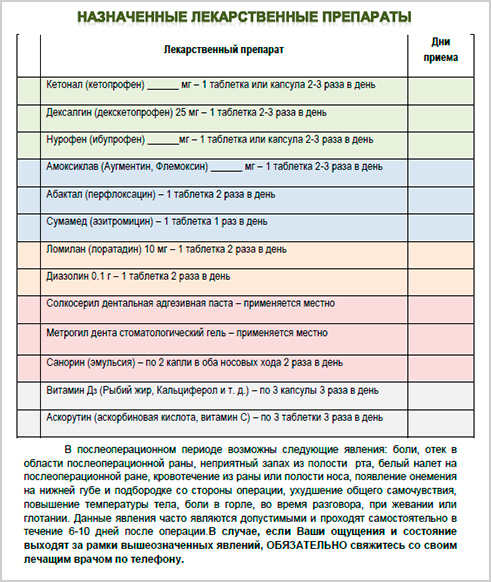
That is why the instruction for the patient includes a list of actions and drugs that prevent complications. For example, in order to avoid postoperative edema, a cold compress should be applied according to a special scheme during the day after removal. To eliminate the risks of infectious complications, the doctor may prescribe antibiotics.
To create a certain level of wound hygiene, special sprays, gels and ointments for local use can be used.
The possibility of taking painkillers is also obvious: in order not to suffer from severe pain within 1-3 days after surgery, analgesics may be required.
Question 1. What should I do if there is a huge bruise on my face after removing the impacted wisdom tooth?
The appearance of a hematoma on the skin in the area of an extracted wisdom tooth is a rare, but natural phenomenon. Most often it happens in patients who suffer from arterial hypertension.Post-traumatic edema becomes a “bruise”, which turns yellow without additional intervention and disappears without a trace.
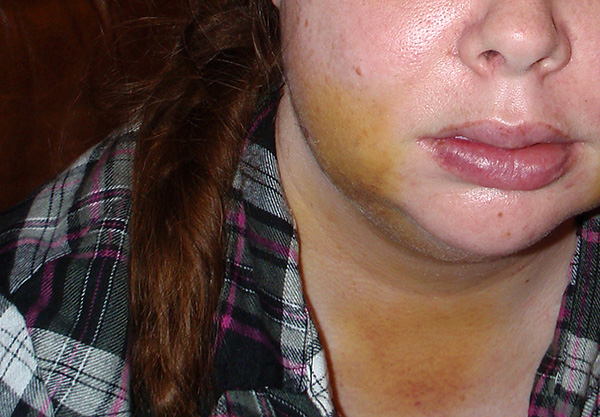
Question 2. Why did the numbness of the lip and chin after the operation to remove the lower wisdom tooth?
Since the impacted tooth is often close to the mandibular nerve that passes through the lower jaw, after its removal, temporary numbness (paresthesia) may occur, which is most often associated with squeezing of nerve fibers, and less often with their damage. Restoration of sensitivity can take from several weeks to several months. To accelerate the process can physiotherapy, prescribed by a doctor.
Patient Recall:
“6 days ago I deleted the rendered eight from the bottom. Removed a woman surgeon with extensive experience. Anesthesia was normal, held out for a long time. The eight had crooked roots, so they had to cut it out. I already deleted the eight, but from above. As usual there was a slight swelling of the cheeks. I waited until nighttime when the freeze would go away, tired, fell asleep without hind legs. The next morning, the left side of the chin, the half of the lip, the tip of the tongue and the gum near 5 teeth remained frozen.Numbness feels like running chills and tingling. I do not know what to do now ... "
Oksana, Moscow
If, after local anesthesia, the patient is most often released from the office 10–30 minutes after the operation, then after anesthesia he will have to “rest in bed”. In general, today, the removal of a wrinkled, impacted wisdom tooth under general anesthesia is not uncommon. The fact is that the dentist himself assesses the complexity of the upcoming manipulation and according to indications (or at the request of the patient, if it is not associated with possible health risks) performs removal under anesthesia.
If seams (non-self-absorbable) are applied, they will be removed later on. Before 6-8 days they are usually not removed. Suture removal is almost always painless: there is enough local anesthesia.
As for the speed of wound healing, this is an individual characteristic. Primary epithelialization occurs in periods from 1 to 3 weeks, and the gum heals completely (smoothed out) most often within 5-6 months.

Removal of the impacted wisdom tooth may fall under the category entitling a person to “lie down” at home, that is, to receive a sick-list. The timing is determined not only by the operating doctor - quite often the dentist also joins this case at the place of residence.
Comment by a practicing dentist-surgeon:
“After the removal of the impacted wisdom tooth from a kindergarten teacher, she lay in the hospital of maxillofacial surgery for a couple of days with the issue of a hospital for only 6 days. And I extended it by another 8: I will explain why. Since the opening of the mouth was still difficult after removing the stitches, it was necessary to extend it, although, in general, the quality of life did not suffer much. It’s just that children couldn’t be managed with such speech disorders and mouth opening disorders.
What to do if complications arise
Unfortunately, various complications after the removal of impacted teeth are not so rare, and not all patients know what to do in this or that situation.

If we analyze patient reviews, then most often the following 3 points are of most interest:
- What to do with prolonged pain?
- Why does an unpleasant smell appear from the hole and how to get rid of it?
- Will the sharp edges of the hole dissolve by themselves?
- And finally, what to do if it is impossible to open the mouth normally after the removal of a tooth?
To begin with, at home in terms of treatment you can only do what the doctor prescribed. If problems arise, and the doctor has practically prescribed nothing, then you should run to the dentist for advice or for professional help.
In the appointments of the dentist after the removal of any tooth, especially of the impacted tooth, an analgesic appears - an anesthetic drug. However, some patients believe that taking 3-5 tablets per 1 hour is normal, and not suspecting that this can lead to much more serious consequences than pain after tooth extraction.

If severe pains continue and painkillers do not help within the prescribed course and in prescribed doses, then the dosage should not be increased several times, but the doctor should be rushed to the doctor for help.
As for the hole, from which it can smell unpleasantly, then, as a rule, the problem is solved by simply improving oral hygiene:
- Gentle cleaning of the teeth with a soft toothbrush (many people neglect this procedure for the period of wound healing);
- Oral baths with antiseptic solutions (but not active rinses, so as not to wash out a blood clot from the hole!)
If there is an unpleasant smell, and there is no pain, discharge of pus and fever, then by 95% it can be said that the wound heals as a whole normally. If the unpleasant smell is accompanied by characteristic signs of inflammation, then these symptoms are closer to the alveolitis,which is treated by a dentist with a curettage of the hole under local anesthesia and the imposition (according to the situation) of anti-inflammatory gels or ointments.
After not very carefully performed removal of the impacted tooth in the hole, sharp edges of the alveoli bone can be felt, which are important to remove in time, that is, smooth the edges to avoid injury to the gums with these "spines". You should not expect that they will quickly close the gum or dissolve by themselves. This procedure is also performed by a dental surgeon.
Well, in conclusion, it is worth noting that sometimes after a wisdom tooth is removed for several days, it can be difficult to fully open the mouth - this is a normal variant, as the tissues involved in opening the mouth are often involved in the area of inflammation and edema. Rest is necessary for comfortable healing, which ultimately will lead to normal mouth opening — most often within 2–3 weeks after difficult removal.
Be healthy!
Interesting video with an example of the removal of a lower, impacted wisdom tooth with its preliminary sawing
"Rescue" of the impacted canine using the bracket system

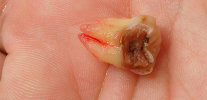

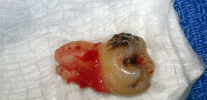
Very detailed and sensible description. Thank.